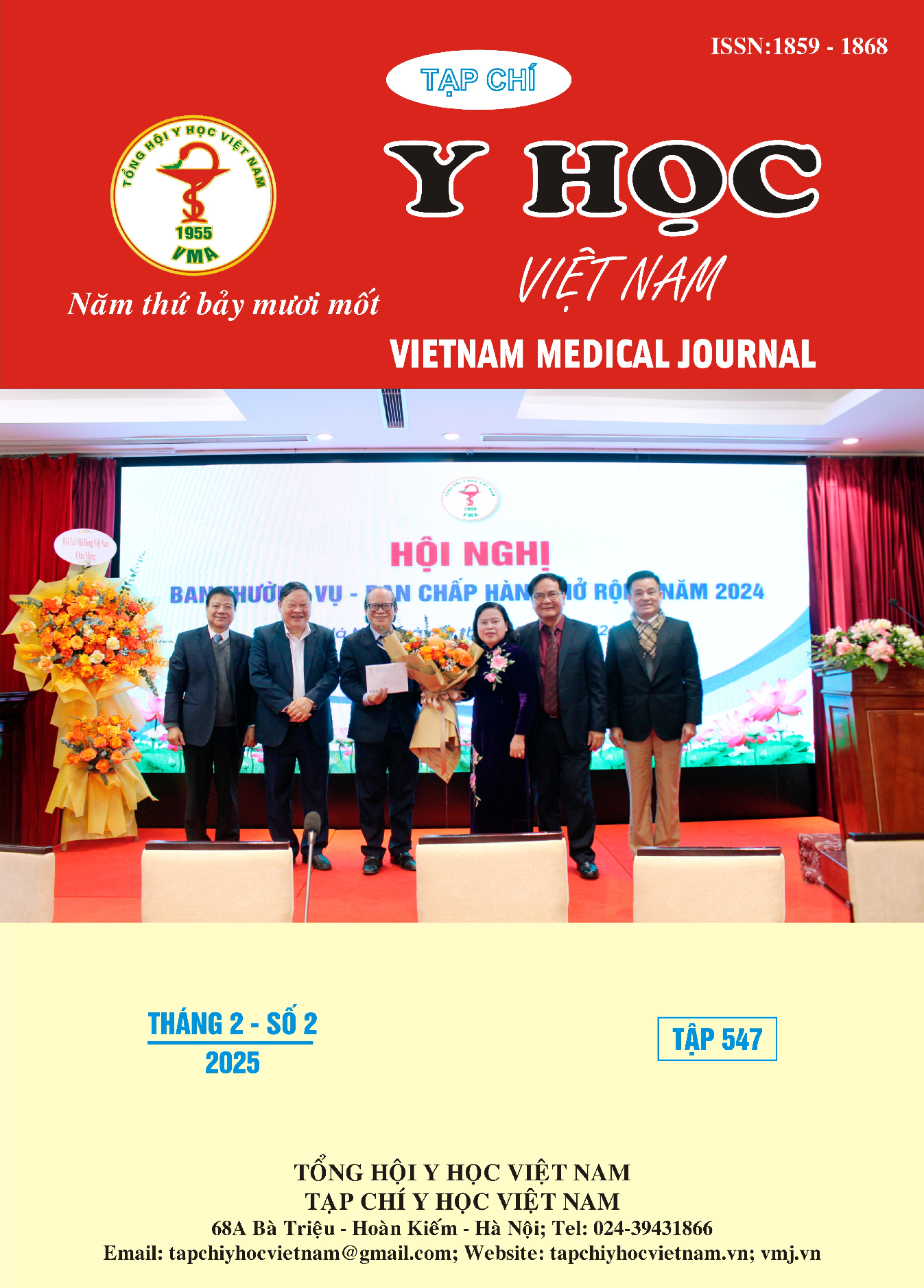RESULT OF BREAST AUGMENTATION WITH IMPLANTS IN VIETNAMESE WOMEN
Main Article Content
Abstract
Aim: This study used the method of breast anthropometric indices to evaluate the result of breast augmentation, using round, micro-textured breast implant in VietNamese women. Subjects and Method: A descriptive, prospective clinical study of 61 female patients who underwent breast augmentation. Follow-up and evaluation of changes in anthropometric indices. Scar assessment using the POSAS scale, quality of life assessmnent using the BREST-Q scale. Result: The average difference between internippler chest circumference and inframammarium chest circumference (DCC): 7,36±2,02cm and 13,3±1,89cm preoperation and 6 month postoperation, respectively. The average preoperative inframammary angle was 123,62 degrees, which decreased to 94,47 degrees after 6 months. The average POSAS score of the periareolar line was 1,53±0,72 (1-3), the lowest among the 3 incision approaches. The average total BREAST-Q score after surgery was 68,89±15,75/100 (39-100). Conclusion: Postoperation, the breasts on both sides tend to sag down and out at a very slow. DCC and the inframammary angle are very valuable in classifying and evaluating ideal breasts. The incision around areola is the most optimal choice for Vietnamese women after giving birth. Breast augmentation with silicone implants significantly improves the satisfaction with the body shape and mental health of Vietnamese women.
Article Details
Keywords
Anthropometry, breast augmentation, breast, Vietnamese breast
References
2. Zelken J, Cheng MH. Asian Breast Augmentation: A Systematic Review. Plast Reconstr Surg – Glob Open. 2015;3(11):e555. doi:10.1097/GOX.0000000000000528
3. Jawanrudi P, Bender R, Pennig D, et al. Evaluation of Quality of Life (BREAST-Q) and Scar Quality (POSAS) after Breast Augmentation. Plast Reconstr Surg Glob Open. 2022;10(5):e4313. doi:10.1097/GOX.0000000000004313
4. Penn J. Breast reduction. Br J Plast Surg. 1955;7(4): 357-371. doi:10.1016/s0007-1226(54) 80046-4
5. Choppin SB, Wheat JS, Gee M, Goyal A. The accuracy of breast volume measurement methods: A systematic review. The Breast. 2016; 28: 121-129. doi:10.1016/j.breast.2016. 05.010
6. Charles-de-Sá L, de Aguiar Valladão T, Vieira DML, Aboudib JH. Anthropometric Aspects in the Breast Augmentation. Aesthetic Plast Surg. 2020;44(5):1498-1507. doi:10.1007/ s00266-020-01853-5
7. Regnault P. Breast Ptosis: Definition and Treatment. Clin Plast Surg. 1976;3(2):193-203. doi:10.1016/S0094-1298(20)30220-0
8. Qiao Q, Zhou G, Ling Y chun. Breast Volume Measurement in Young Chinese Women and Clinical Applications. Aesthetic Plast Surg. 1997;21(5):362-368. doi:10.1007/s002669900139
9. Vercelli S, Ferriero G, Bravini E, et al. Cross-cultural adaptation, reproducibility and validation of the Italian version of the Patient and Observer Scar Assessment Scale (POSAS). Int Wound J. 2017;14(6):1262-1268. doi:10.1111/iwj.12795
10. Randquist C, Por YC, Yeow V, Maglambayan J, Simonyi S. Breast augmentation surgery using an inframammary fold incision in Southeast Asian women: Patient-reported outcomes. Arch Plast Surg. 2018;45(4):367-374. doi:10.5999/aps.2018. 00045


